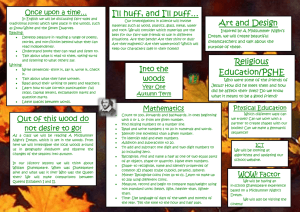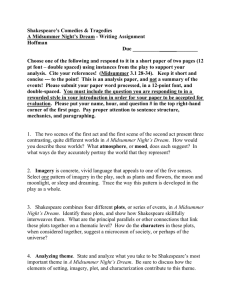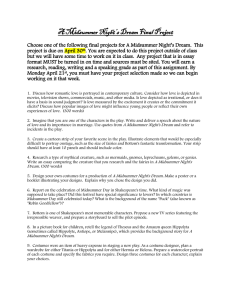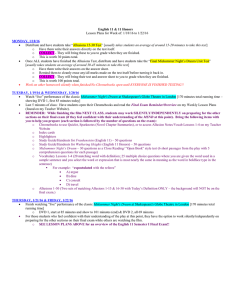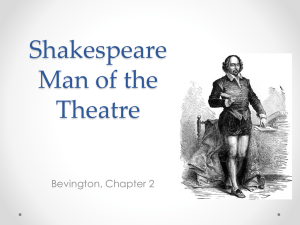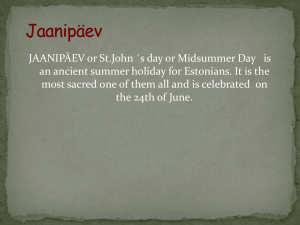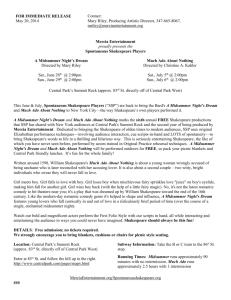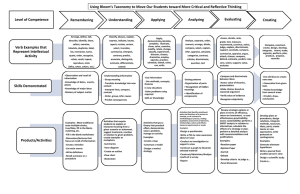Introduction to Shakespeare
advertisement
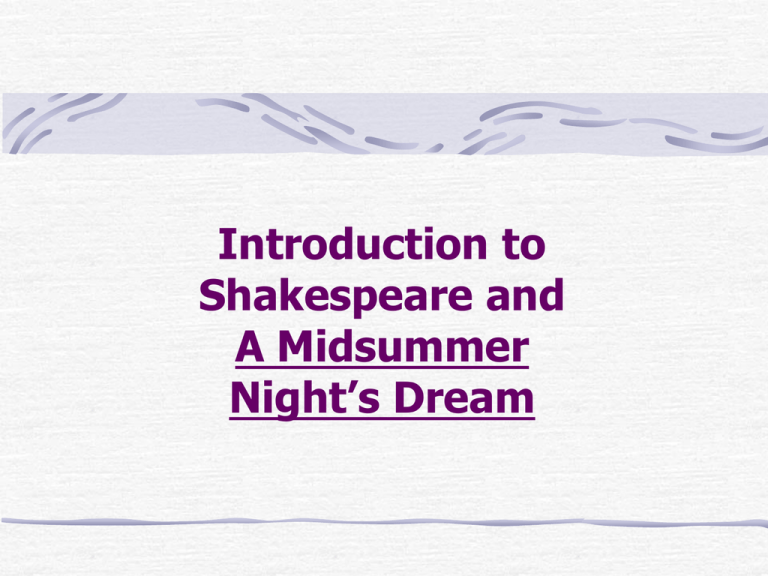
Introduction to Shakespeare and A Midsummer Night’s Dream William Shakespeare Born 1564, died 1616 Lived during the Renaissance (cultural “rebirth”) Patrons: Queen Elizabeth I, then King James I Left family in Stratford-on-Avon & went to London to make a living as actor, poet, playwright Married Anne Hathaway and had 3 children: Susanna, Hamnet (died age 11) and Judith Wrote 37 plays and over 150 sonnets (poems) The Globe Theatre Built in 1599, burned down in 1613, rebuilt in 1614, closed in 1642 by the Puritans. Shakespeare’s most famous plays premiered here. Built across the river from London proper - outside city limits. Open air, daytime performances. Flag flew on performance days. Inside the Theater EVERYONE came, from nobles to “groundlings” People came to “hear” a play emphasis on language No curtain Minimal set and props Acting was not a respected profession Men played all parts Repertory - same group of actors Othello: http://www.youtube.com/watch?v=cUKGesWwT6 k Set up for Midsummer: Genres and Conventions Types of plays Comedies Tragedies Histories Structure: Divided into five acts Written mostly in verse (poetry) Minimal stage directions Tragedies and Comedies Tragedy Comedy Named after hero of high birth (royal or aristocratic) Hero has a tragic flaw Ends in death No title characters, can be high or low born Mistaken identities, mixed up plans, chaos Ends in marriage A Midsummer Night’s Dream was written c. 1594, early in Will’s career On “Midsummer Night” …. Fairies and sprites were especially powerful People had especially vivid dreams People were more susceptible to both love and insanity (perhaps because love was considered a form of insanity!) “Dream” could mean A fantasy A nightmare The work of fairies A way to work through problems Four Groups of Characters Rulers Four Lovers Mechanicals (Common Working Men) Fairies Their lives intersect - chaos ensues. Two Worlds Athens Ruled by Theseus Daytime Order Reason Law Symmetry Magic Forest Ruled by Fairies Nighttime Chaos Passion Anarchy Asymmetry 9


